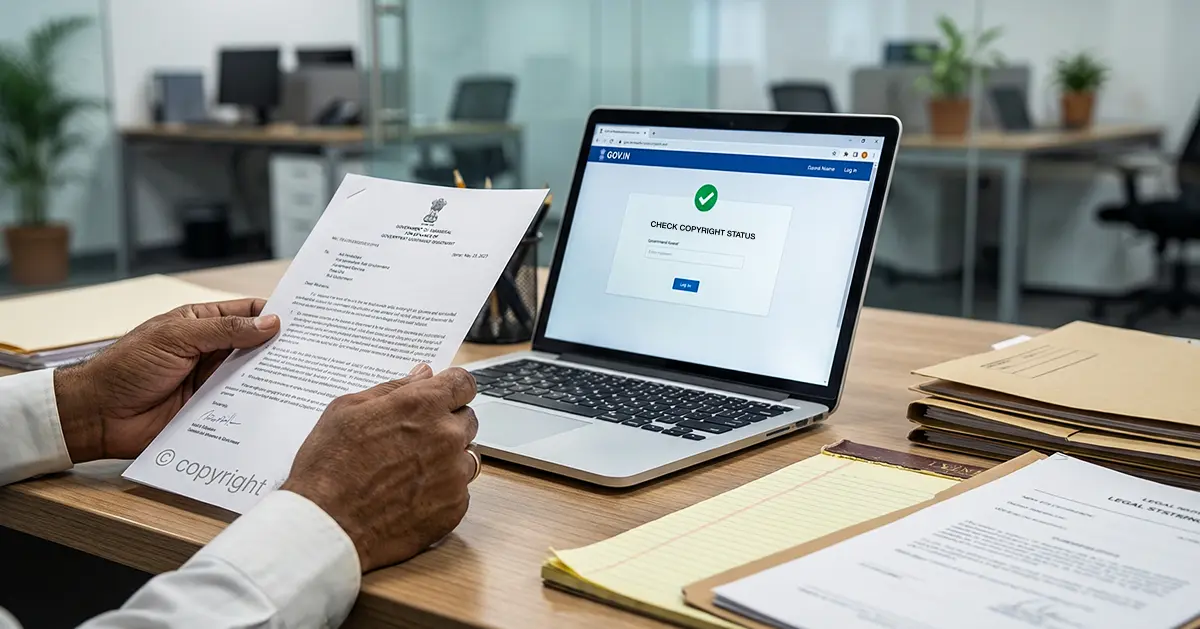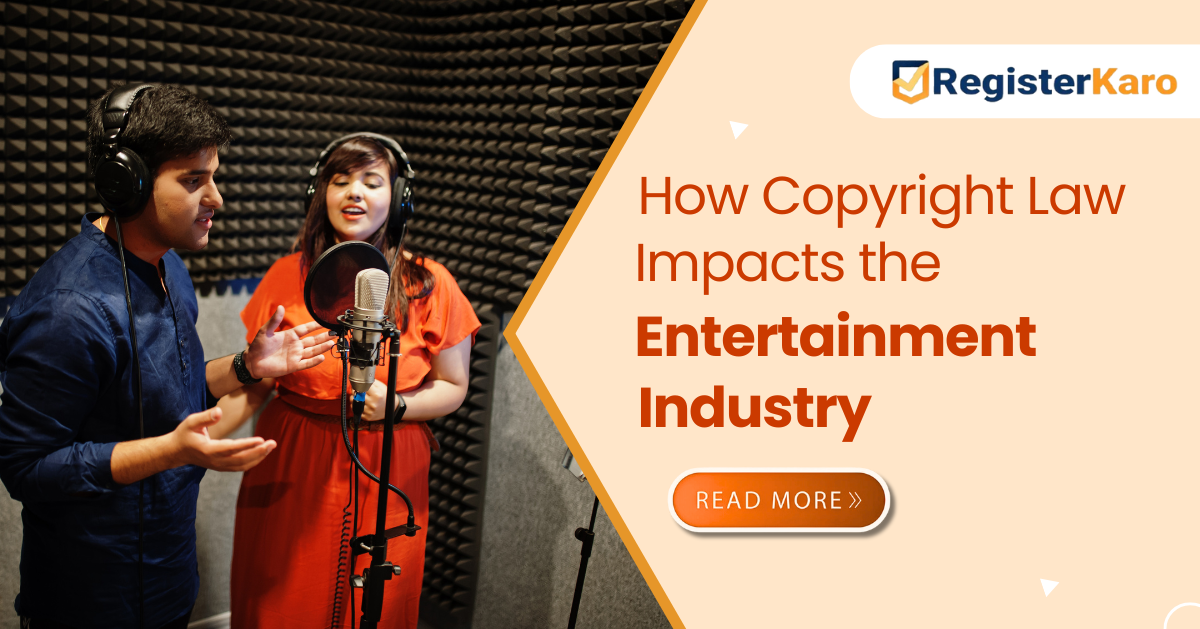
Introduction
What kinds of works protected by copyright fall under this protection? Indian copyright law provides the legal framework to protect your creations from unauthorized use. It grants exclusive IP rights over your work, allowing you to control how it’s shared, reproduced, and sold.
So whether you’re crafting a piece of music, writing a novel, or designing a work of art, copyright protection is crucial as it ensures your hard work is respected and rewarded. Let’s break down the different creative works that copyright shields and how they benefit creators like you!
What are the Works Protected by Copyright in India?
Works protected by copyright in India include original literary, artistic, and musical creations. Indian copyright law grants creators exclusive rights to their works, protecting them from unauthorized use, reproduction, and distribution. This legal protection aims to encourage creativity by rewarding creators with intellectual property rights, allowing them to control and benefit from their creations. Copyright protection applies to a wide range of works, ensuring creators have exclusive control over how their works are shared, reproduced, or sold.
Benefits of Works Protected by Copyright
Copyright offers creators essential protections, financial benefits, and moral rights to preserve the integrity of their work.
- Exclusive Rights: Creators can prevent others from copying, distributing, or performing their works protected by copyright without permission.
- Financial Reward: Copyright provides a source of revenue through licensing and royalties.
- Moral Rights: Creators retain the right to protect the integrity of their creative works, even after transferring the copyright.
Types of Works Protected by Copyright in India
Indian copyright law covers a wide range of creative works. Here’s a breakdown of the primary types of works protected by copyright:
1. Literary Works
Literary works include written content, both published and unpublished, such as:
- Books
- Articles
- Poems
- Software programs
- Manuals
- Websites
Note: Software programs are also protected as literary works under Indian copyright law, ensuring that the original code is safeguarded against piracy.
2. Musical Works
Musical compositions, whether with or without lyrics, are among the works protected by copyright. This category includes:
- Musical scores
- Soundtracks
- Instrumental compositions
- Songs (both lyrics and music)
In addition to the music, the lyrics of a song are also separately protected as literary works, giving dual copyright protection.
3. Artistic Works
Artistic works encompass visual art, illustrations, and designs. Copyright protection applies to:
- Paintings
- Drawings
- Sculptures
- Photographs
- Architectural designs
- Craftworks
This category ensures that artists retain control over their unique creative works, preventing unauthorized reproductions.
4. Cinematograph Films
Cinematograph films are another significant category of works protected by copyright under Indian copyright law. This includes:
- Movies
- Documentaries
- Short films
- Commercials
- Animations
Filmmakers and production houses can protect their work from unauthorized copying and distribution through IP rights.
5. Sound Recordings
Sound recordings such as music tracks, podcasts, and audiobooks are also works protected by copyright. This extends to:
- Audio recordings of music
- Voice recordings
- Radio and TV broadcasts
Even if the content is recorded on various devices (such as tapes, CDs, or digital formats), copyright protection provides security.
6. Dramatic Works
This includes works protected by copyright meant for stage performance, such as:
- Plays
- Dance performances
- Choreography
Creators of dramatic works are entitled to copyright protection, allowing them to control how the work is performed and adapted.
7. Computer Programs
As mentioned, software programs fall under literary works, but they also have a specific legal standing in the realm of IP rights. Copyright protection extends to:
- Application software
- Operating systems
- Video games
Protection is granted for both the source code and object code, preventing illegal distribution or alteration of the program.
8. Architectural Works
Architectural designs and building plans are protected as artistic works protected by copyright. This includes:
- Design of buildings
- Layouts
- Architectural blueprints
Designers can prevent others from copying their unique architectural ideas through copyright protection.
9. Broadcasts
Broadcasting organizations enjoy copyright protection over their broadcasts, whether on TV or radio. This includes:
- Television broadcasts
- Radio programming
- Online streaming content
This protection ensures that others do not reproduce, distribute, or communicate the broadcast without authorization.
10. Derivative Works
Derivative works, including adaptations, translations, or transformations of original works protected by copyright, are also protected under copyright law. Examples include:
- Movie adaptations of books
- Translations of novels
- Reinterpretations of plays
The creator of the derivative work holds copyright over the new version, but the underlying work remains protected by the original author’s copyright.
Importance of Works Protected by Copyright
India, as a member of international copyright agreements like the Berne Convention for the Protection of Literary and Artistic Works, ensures that creators’ IP rights are respected globally. By offering protection to creative works, India encourages innovation and creativity in various sectors, including literature, music, art, software development, and more.
How Do Works Protected by Copyright Contribute to IP Rights?
Copyright protection plays a crucial role in supporting creators, fostering economic growth, and promoting cultural preservation.
- Economic Growth: By safeguarding creators’ rights, India supports innovation, leading to economic growth in industries like entertainment, publishing, and software development.
- Cultural Heritage: Copyright law protects the cultural heritage by allowing traditional and modern artists to retain control over their works protected by copyright.
- International Recognition: Protection under Indian copyright law ensures that creators’ works are respected internationally, promoting global business opportunities.
How to Register Copyright in India?
To claim copyright protection, the creator must first create the work and then optionally register it with the Copyright Office of India. While registration is not mandatory for protection, it provides legal proof in case of disputes.
Steps to Register a Work:
- Application Submission: Submit an application form with required details (name of the creator, title of the work, etc.).
- Payment of Fees: Pay the registration fees as prescribed by the Copyright Office.
- Examination: The Copyright Office examines the application.
- Issuance of Certificate: Upon successful registration, a certificate is issued to the creator.
For more information, check out Copyright Registration on our website.
Conclusion
In India, copyright protection covers a wide variety of creative works, from literary compositions to films, software, and artwork. By understanding the types of works protected by copyright under Indian copyright law, creators can safeguard their intellectual property and ensure that their creative efforts are respected and rewarded.
Whether you’re a writer, musician, artist, or software developer, it’s essential to protect your work to maintain control and benefit from your creativity.
Contact RegisterKaro for registration help! If you need assistance with copyright registration or have any queries about protecting your creative works, feel free to reach out.
Frequently Asked Questions
1. How does copyright protection benefit creators?
A: Copyright protection allows creators to retain exclusive rights over their works. This means no one can reproduce, distribute, or adapt their works without permission. It also provides creators with the ability to earn through royalties and licensing, promoting creative works while protecting their IP rights.
2. Is copyright protection available for software programs in India?
A: Yes, software programs are considered literary works under Indian copyright law and are therefore entitled to copyright protection. This ensures that the source code, object code, and software design are protected from unauthorized use.
3. Do I need to register my work to get copyright protection?
A: No, copyright protection is automatic as soon as a creative work is created and fixed in a tangible form. However, registration can serve as evidence in case of disputes, making it easier to enforce IP rights.
4. Can I copyright a work that is inspired by someone else’s creation?
A: Yes, as long as the work is original and does not infringe on the copyright of others. Derivative works, such as adaptations or translations, are also eligible for copyright protection as long as they offer original contributions.
5. What is the duration of copyright protection in India?
A: In India, copyright protection typically lasts for the lifetime of the author plus 60 years. For works like cinematograph films, sound recordings, and anonymous works, the protection period is 60 years from the date of publication.
6. Can I transfer my copyright to someone else?
A: Yes, copyright can be transferred through a written agreement. The transfer can include the exclusive right to reproduce, distribute, or perform the work, granting the new owner full IP rights.
7. What should I do if someone uses my work without permission?
A: If someone uses your works protected by copyright without your consent, you can send them a cease and desist notice or take legal action under Indian copyright law. Registration of your work can make it easier to prove ownership in such cases.
8. How can I register my work under copyright in India?
A: To register your work, you need to apply to the Copyright Office of India, along with details such as the title of the work, the creator’s information, and a copy of the work. While registration is not mandatory, it offers additional legal protection.




